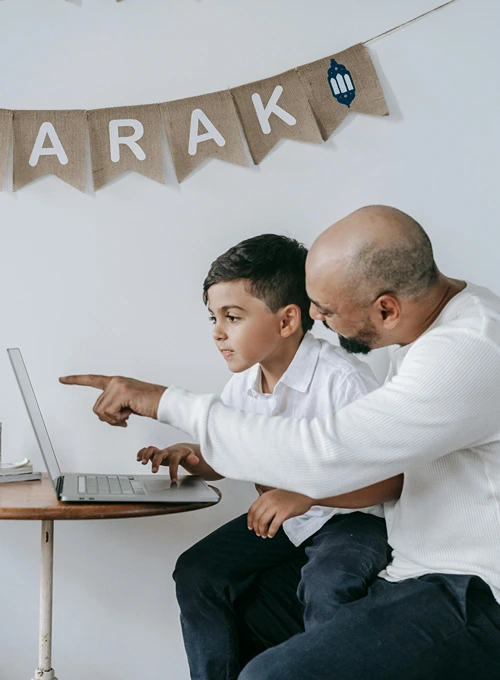How to Teach Kids Safe Online Habits
Your child’s online world is growing fast—and so are the risks waiting for them to take the bait. From sneaky scams to toxic content, digital danger is real in 2025 and beyond. But don’t panic. With the right habits, tools, and a bit of guidance from you, your child can walk through it all safely.
Here’s exactly how you can make smart online behavior your kiddo’s second nature.
Why Safe Online Habits Matter—Right Now
You need to know what’s at stake, especially for your child’s wellness and future. According to studies, 1 in 3 internet users worldwide is a child—and kids are 1.24 times more likely to be online than adults these days. Also, research shows that by age 9–13, 71% of them have already faced online harm, with about 72% of them reporting at least one cyber threat. No matter how prevalent these instances may seem, only a small percentage of parents were aware of them.
This gap means you have quite a critical role—to not just monitor, but to empower your child to act safely and smartly on the net, especially when you’re not around.
Set Up Safe, Kid-Friendly Tech
Start strong—build trust and structure together so your child will feel your concern and the seriousness of these matters.
Pick age-appropriate devices
You can always ask your laptop or smartphone seller, which could be perfect for your youngsters, with features you can easily tweak to help shield them from online harm. There are also easy-to-adopt parental controls you can set up, so you’ll be able to restrict unsuitable apps and flag screen limits to safeguard their health, like proper sleeping and exposure habits. Also, create separate user accounts—no admin access—for the young ones to double up on security.
Teach Good Passwords
It’s a part of giving them responsibility but explain why “Princess123!” isn’t a safe password anymore. Just guide them through fun and more interesting ways to craft mix‑and‑match passwords, including the habit of changing and managing them responsibly.
Manage Screen Limits
Encourage your little ones to turn off devices before dinner and bedtime–a healthy routine keeps online use in check and well-maintained.
Build Cyber Awareness—Empower Them to Detect Threats
This is where firms that offer cybersecurity as a service can help you counter possible threats and install expert protection when DIY security isn’t enough to keep up with what children are experiencing online right now.
Know phishing red flags
Always teach your kids how to become responsible and to:
● Double-check sender emails and spelling mistakes.
● Never click unexpected links—even from friends.
● Ask a trusted adult before responding to suspicious requests.
Engage with games & quizzes
Interactive tools like Cyberwise quizzing and family “spot the scam” games make learning stick, yet can create a fun bonding time for you.
Spot Disruptive Content
One day, your kid might face cyberbullying, sextortion, or viral misinformation, but before that happens, you teach and help them some counter-measures, like:
● Keep your dialogue box open
Explain that hurtful messages online can lead to real-world anxiety or depression. Say things like: “If anything ever makes you uncomfortable, come to me—I’ll be ready all the time.”
● Teach them to pause and ponder
Encourage empathy: “Would I feel okay if that were said about me?” That reflection prevents regrets, online drama, or bullying behavior.
● Detect deepfakes & impersonation scams
Show how filters or distortions can signal tweaked content and mimic someone’s appearance or clone voices.

Foster Digital Empathy & Responsibility
Walking through the online world responsibly is part of safe use that you can hand down to your younger generation:
● Model kindness online
You’re your child’s model, so set the tone–treat others respectfully—comments, emojis–that can help them express courtesy online.
● Explain digital footprints
Whatever is online stays online–help them learn control–and understand how photos, comments, and even private chats can affect and shape their tomorrow.
● Boost citizenship awareness
Encourage them to ask: Is this post respectful, helpful, and true for everyone?
Stay Safe with Verified Tools & Resources
It’s not just about teaching—it’s also arming them with trusted tools and learning self-preservation, like:
● Parental‑control apps—to monitor usage without spying.
● Secure browsers—with kid-safe filters and locked settings.
● Cybersecurity services—when a professional layer of protection is needed beyond your control.
Use Official Guidelines & Laws to Your Advantage
As U.S. laws on children’s care evolve–some still in the offing–you can already maximize their provisions to raise your kids’ awareness of how these laws can help them, like COPPA (Children’s Online Privacy Protection Act). It’s how the government and families want to protect their data privacy, even at age 13. So, let them know why apps ask for your permission before collecting data and information.
Turn Your Strategy into a Family Pact
Bring the whole family into your convos and:
Write a Digital Contract
Include screen time rules, privacy, sharing practices, and what makes your child safe.
Hold weekly check-ins
Casual chats about favorite apps, recent friend connections, or weird notifications keep awareness alive.
Celebrate good digital decisions
Reward thoughtful habits: password upgrades, helpful advice sharing, and spotting scams.
Final Word
You are your child’s best digital advocate–by setting structure, teaching detection, fostering open dialogue, and using verified tools—you prepare them to walk securely on the net. As the world advances, safe digital behavior isn’t optional—it’s a must-have. Let them lead, learn, and make your trusted guidance light them every inch of the way.







